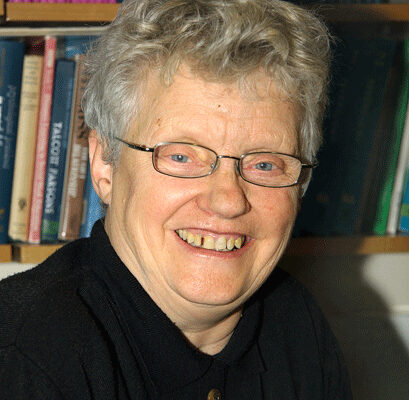Thousands more deaths were added to the Covid-19 figures from late April – those who had died in “care homes”. This generic term is used by the press and officialdom to describe a place that is not a home but is outside hospital. From international comparisons rapidly assembled (Comas-Herrera, 2020), it appears that up to 70% of deaths in some parts of the world occurred in care homes. Although possibly flawed, this data is quite shocking, suggesting widespread “care-less-ness” about older and disabled people.
People with learning disabilities were a subset of this care home population. I have no idea how someone supported by a personal assistant who died outside hospital was counted, if at all. What I do know is that, contrary to official guidance, some youngish people with learning disabilities were automatically labelled do not resuscitate (DNR), regardless of individual potential to benefit from treatment. What I also know is that blindness to the deaths of people with learning disabilities has a long history, and this has consequences. 
It was with this in my mind that I read Susanna Shapland’s moving piece When Mass Murder was Social Policy in the last issue. Let us not fool ourselves with the comforting thought that this did not happen here. It did – not in the stark way death was visited upon disabled people in Nazi Germany, but by a combination of neglect, failure to treat, care-less-ness leading to accidents and even, at times, outright murder. Just as many countries enthusiastically supported Jewish extermination, so they also joined in, less obviously, with a desire to reduce the “inferior stocks” and the “useless eaters”. Best known probably are the 20th century policies of sex segregation in institutions to prevent “breeding”, and the legalised sterilisation of thousands in many countries – not, formally, in the UK.
In Germany, there are now memorials. There are none here. The large institutions have been airbrushed from the landscape. Few even have anything to tell people that they were there.
Hidden hospital deaths
Yet they, too, were places of death. Some, like Harperbury Hospital in Hertfordshire, had their own crematoria. Many had their own cemeteries. They were not often (that we know of) settings of deliberate murder although this was not unknown (just read Allan Mayer’s 2008 novel Tasting the Wind). Yet the ravages of infectious disease seen in “care homes” this year were present in 1970 in overcrowded, understaffed and dirty wards, where around 50,000 people lived. Tuberculosis in particular wrought havoc.
We do not know how many people died behind closed doors back then – just as in 2020. In 2016, the Mazars inquiry into practice at Southern Health NHS Foundation Trust (Care Quality Commission, 2016) showed that unexpected deaths of older or disabled patients at the trust were not investigated. The 1969 inquiry into abuse at Ely Hospital near Cardiff noted an “unduly casual” approach to investigating deaths (DHSS, 1969: para 78b). Finding out about these deaths is far from straightforward. Many records were lost when hospitals closed. Most that remain are subject to the widely quoted 100-year closure rule, as they contain patient names. However, a potent source of information is the series of public inquiries of the 1970s.
One of these – the 1974 inquiry into South Ockendon Hospital – was prompted by an enrolled nurse who resigned after there were seven deaths in two months on the ward where she worked. She told the inquiry:
“It was getting worse on W [a ward]. The patients appeared to be dying one after another… It is how they went. How they were treated when they were dying or sick. This is what I am complaining about.” DHSS (1974): para 345
She was on night duty, expected to look after 60 older patients single handed, some with complex, serious health conditions and many with severe learning disabilities. In the same way, underpaid and underappreciated care home staff in 2020 have been struggling, behind closed doors, to provide adequate care for disabled and older residents during a pandemic, with neither medical support nor protective equipment. South Ockendon and Ely were not unique – there were many other death scandals in hospitals.
Why remember this awful history now? Because there is absolutely no room for complacency and believing that eugenics was a Nazi aberration, safely buried in an increasingly distant past. It is and always has been alive and well and lurking in our society.
A crisis like coronavirus shows vividly how some people’s lives are undervalued. No one was counting in the past and, unless we shout really loudly, no one will count now.
● Thanks to Pamela Dale for her thoughts and insights on this topic
Jan Walmsley is an independent researcher
References
Comas-Herrera A, Zalakain J, Litwin C, Hsu AT, Lane N, Fernandez-Plotka J-L (2020) Mortality Associated with COVID-19 Outbreaks in Care Homes: Early International Evidence. https:// tinyurl.com/rgq7747
Care Quality Commission (2016) Report on Southern Health NHS Foundation Trust DHSS (1969) Report of the Committee of Inquiry into Allegations of Ill-Treatment of Patients and Other Irregularities at the Ely Hospital, Cardiff. Cmnd 3975. London: HMSO DHSS (1974) Report of the Committee of Inquiry into Allegations Of Ill Treatment Of Patients at South Ockendon Hospital. HC 124. London: HMSO





